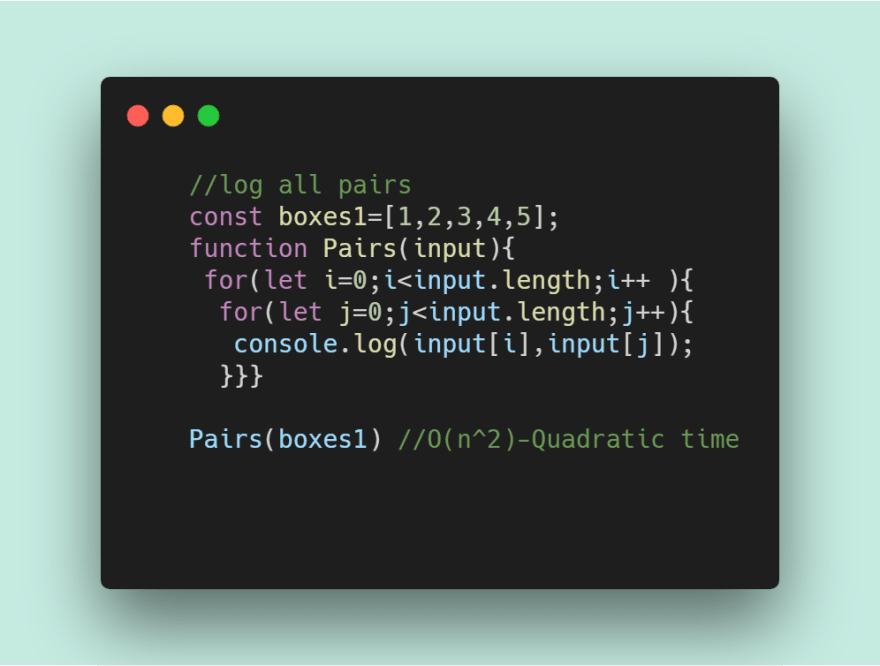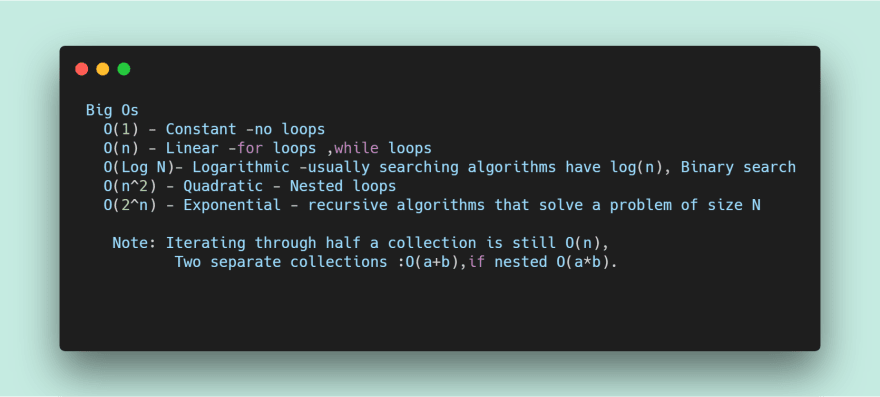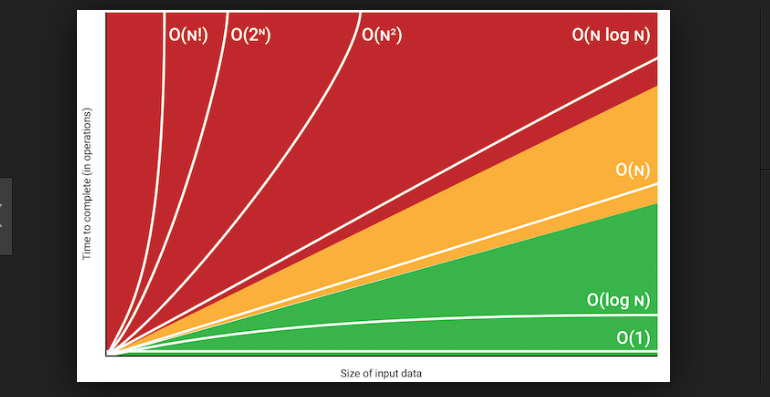Two important things to remember while coding are
- Readability and
- Scalability.
There are many ways to solve a problem but a good developer always strive for better efficeint code and performance.
There comes the Big-O part to scale the time and space complexity of a algorithm/problem.It is helpful in determining the complexity and also scale the performance of algorithm.
Different Big-O terms are
- O(1) - Constant time
- O(n) - Linear time
- O(n^2) - Quadratic time
O(1) - Constant Time complexity
The constant Time complexity explains that no matter what size of the input or output, the execution time and the resources used will always be the same. No matter how many times or where the algorithm is executed, it produces same performance all the time. For example:
O(n): Linear Time Complexity
If an algorithm has linear complexity, then execution time and/or resources used are directly proportional to the input size. For example:
O(n2): Quadratic Time Complexity
The quadratic complexity is present when the impact of the algorithm is directly proportional to the square of the input size.
This complexity is common in sorting algorithms like bubble sort, insertion sort, and the selection sort.
Here are some of Tricky examples
This is a good example, if the function takes two different inputs,so Big-O changes to O(input1 + Input2).
For above example,if it is a nested for Loop then the Big-O changes to O(input1*input2).
Big-O cheatSheet and Graph
Feel free to discuss more tricky examples.
Thank you for reading.














Top comments (1)
If
O(log n)is logarithmic, what do you callO(n log n)?Edit: It's called
Linearithmic